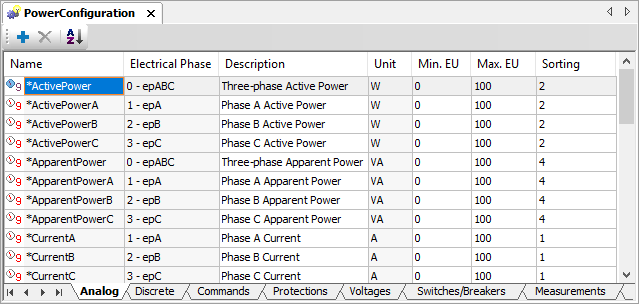The first concept of standardization in Elipse Power relates to types of Analog Measurements. A Measurement type is understood as different measurements in an application, such as Active Power, Line Voltage between Phase A-B, Current in Phase A, Oil Temperature, etc. A Measurement type may concatenate the sampled physical quantity (for example, "Active Power [W]" and "Temperature [°C]") with meter's location (for example, "Phase A" or "Oil").
By using the concept of Measurement standards, users reuse the unit configuration of a sampled quantity (for example, "V", "°C", "W", "Wh", "A", etc.) of the electrical phase where that Measurement is sampled and a Measurement description (for example, "Three-Phase Active Power"). With it, when users instantiate a Measurement in an application (for example, "Voltage in a Generator Terminal"), this Measurement must only point to that standard to receive the configuration adopted by the related standard. This way, if users want, for example, change a Measurement description, just change the respective standard so that all Measurements automatically referencing that standard are updated.
Some standards are available in Elipse Power installer and do not allow changing their names, Electrical Phases, and Engineering Units. These Elipse Power native templates have a reserved prefix "*" and cannot be removed from the list of standards. Some of these Measurements with an "*" prefix can be used by specific algorithms available in Elipse Power (for example, Power Flow, Topology Processor, and State Estimator) or by Elipse Power's Screen objects library, and therefore they were defined as native. The next figure shows a screen to create and edit Analog Measurement standards.

Analog Measurements